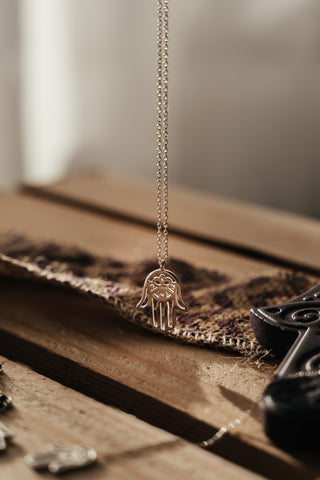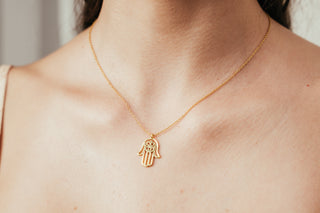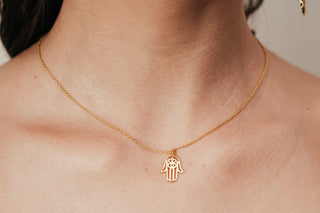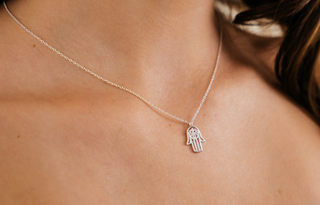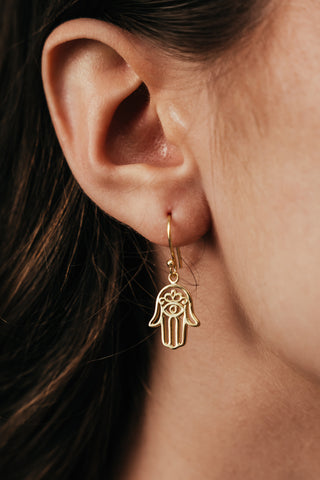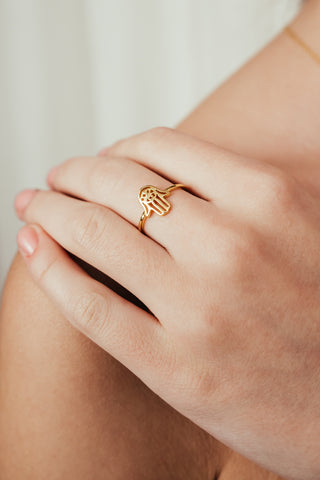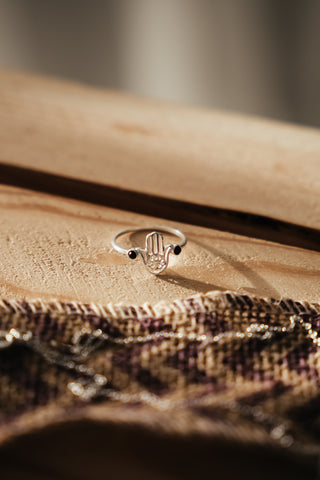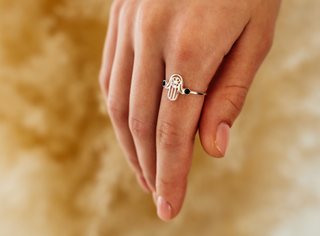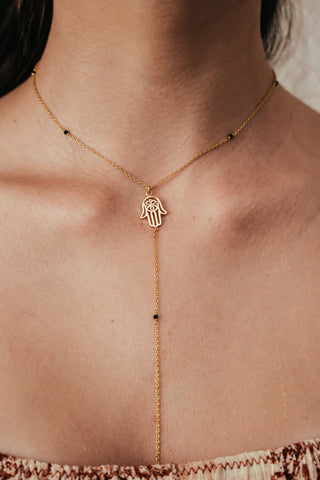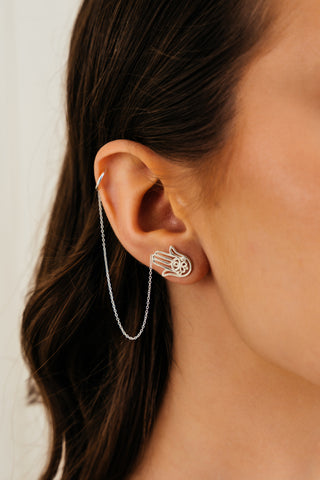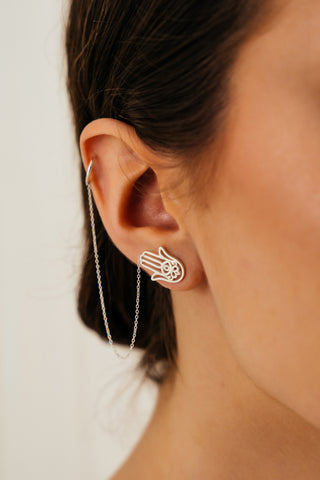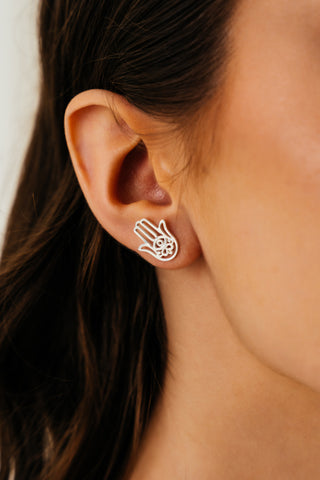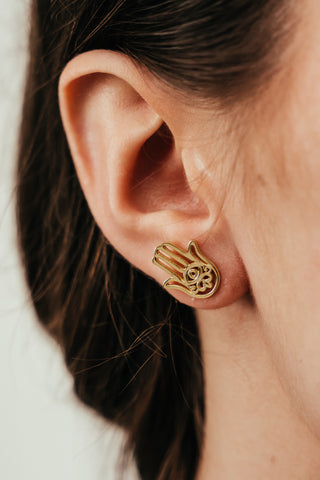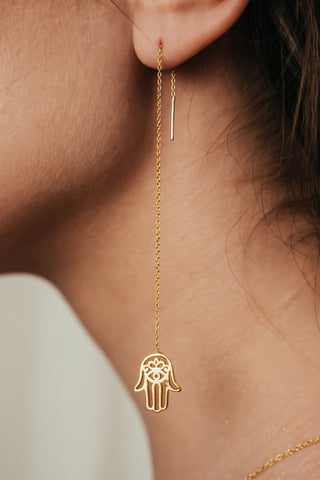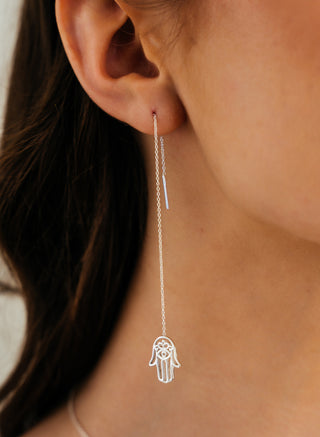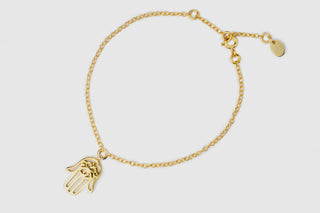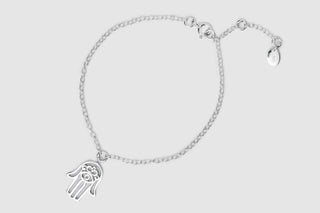A Timeless Symbol of Protection, Meaning, Global phenomenon
The Hamsa, also known as the “Hand of Fatima” or “Hand of Miriam,” is one of the most enduring symbols in human history. Revered across cultures and epochs, this hand-shaped talisman has carried deep spiritual meanings, served as a symbol of protection, and emerged as a prominent motif in modern fashion and jewelry. Its journey is a story of interconnected cultures, evolving interpretations, and timeless appeal.
The Origins of the Hamsa
The Hamsa’s roots trace back to ancient Mesopotamia and Egypt, where hand-shaped amulets symbolized protection and divine blessings. In Mesopotamian culture, the open hand was associated with divine intervention and was often invoked for protection against malevolent forces. Similarly, in ancient Egypt, the hand symbol was linked to the Eye of Horus, embodying protection, health, and strength.
The Meaning of the Hamsa Across Cultures
Jewish Tradition: In Judaism, the Hamsa is often referred to as the Hand of Miriam, after the sister of Moses. It represents divine protection and is believed to ward off the “evil eye” — the harmful effects of envy or malice. The number five, associated with the fingers of the hand, also has significance in Jewish mysticism, symbolizing God’s omnipresence.
Islamic Tradition: In Islam, the Hamsa is known as the Hand of Fatima, named after Fatima Zahra, the daughter of Prophet Muhammad. It symbolizes faith, patience, and divine blessings. The five fingers are often seen as a reminder of the Five Pillars of Islam.
Christian Tradition: While less common, the Hamsa has been adopted in Christian contexts as a symbol of protection, often linked to the Virgin Mary.
Middle Eastern and North African Cultures: Across the Middle East and North Africa, the Hamsa is a powerful talisman for protection against the evil eye, a pervasive belief in many cultures. The eye, often depicted within the palm, amplifies the protective power of the symbol.
Indian and Eastern Traditions: While not specifically called the Hamsa, the open hand gesture resonates with Eastern traditions. In Hinduism and Buddhism, hand gestures (mudras) convey spiritual meanings, often related to protection and wisdom.
Practical Uses of the Hamsa in Ancient Times
In its earliest iterations, the Hamsa was a practical tool for spiritual protection. Carved onto doorways, worn as an amulet, or displayed as a symbol, it was believed to shield homes, individuals, and communities from harm.
- Amulets: Hamsa pendants made of metal or clay were carried or worn to repel negativity.
- Architecture: Hamsa carvings adorned the entrances of homes and places of worship, creating a protective barrier against external malevolence.
- Ritual Practices: Some cultures integrated the Hamsa into rituals or ceremonies aimed at invoking divine blessings.
The practical role of the Hamsa wasn’t limited to metaphysical protection. Its presence served as a reminder of faith, hope, and perseverance, making it an essential symbol in daily life.
The Hamsa in Jewelry: A Global Phenomenon
Jewelry has been the primary medium through which the Hamsa has captured global attention. From delicate necklaces to ornate bracelets, Hamsa-inspired pieces have become staples in personal adornment.
Why Is the Hamsa So Popular in Jewelry?
- Versatility: The Hamsa’s design lends itself to a variety of styles, from traditional to modern, allowing it to appeal to diverse audiences.
- Symbolic Value: Wearing a Hamsa is seen as more than a fashion statement; it’s a way to carry protection, positivity, and spirituality wherever you go.
- Personalization: Jewelers often combine the Hamsa with other elements, such as gemstones, birthstones, or initials, to create personalized pieces that resonate with individual meanings.
- Global Appeal: The Hamsa transcends religious and cultural boundaries, making it a universal symbol that resonates with people from all walks of life.
- Accessibility: Hamsa jewelry is available at all price points, from high-end designer collections to affordable handmade pieces, ensuring its widespread availability.
in an era where people seek deeper connections to their accessories, the Hamsa stands out as a symbol that bridges the past and the present, uniting ancient wisdom with modern style. Its popularity is not merely a trend but a reflection of its enduring power to inspire, protect, and adorn.


